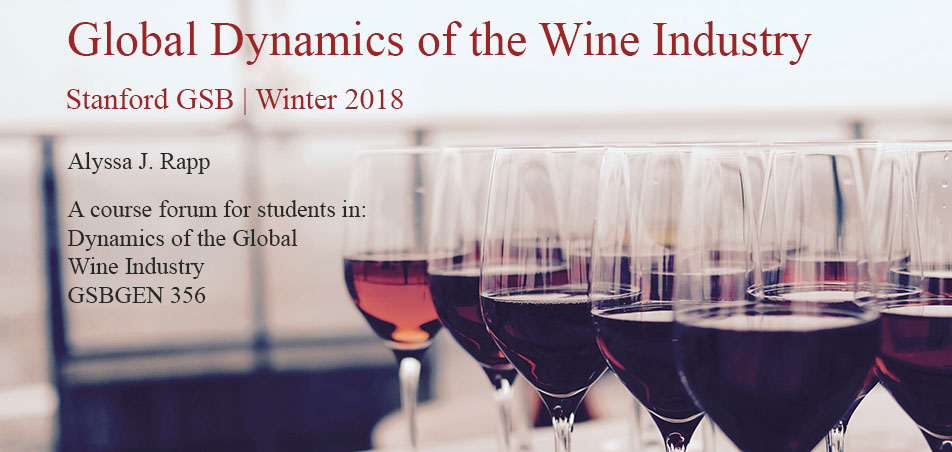Last week’s theme seemed to be tradition: between the
historic story of the Rothschild family and our discussion of the Wente winery,
I began to think about the tension between maintaining tradition and developing
an ambition of growth. At one point in her presentation, Christine made a
passing comment about preferring to support mid-size family wineries over the
big guys. I then raised my hand and asked whether any of the family wineries
had ambitions of getting acquired, and she had trouble thinking of any
examples.
Do these companies just run as lifestyle brands and ways to
employ family members, or do they actually aim to be profitable in an ambitious
way?
The Rothschild story obviously represented the latter
category, maintaining huge growth globally throughout the decades. I’m curious:
what differentiates the brands that aim to grow like Rothschild from the
moderate family companies like Wente?
I’m also curious about the intra-industry perception: how do
the big guys perceive the small guys, and vice versa?
I’m also curious about consumer perception: in the same way
that farm to table food made its way in the 1970’s and microbreweries became
popular in the 1980’s, there are now so many smaller wineries across the
country. There is so much consumer consciousness about what we eat (think
buzzwords like local, sustainable, etc)—are people also thinking this way about
the wine they drink?
I’m also curious about why people will buy a bottle for the
first time. I hypothesize that major contributing factors include: the label,
price, vague guidance from whomever is selling the products, and maybe some
previous knowledge or conceptions. Since the vast majority of consumers are unknowledgeable
when it comes to what they drink, I’m keen to learn tactics for getting someone
to purchase a new brand for the first time. How do folks like the Wente family,
who don’t have the deep pockets or advertising budgets of the big distributor
brands, reach consumers?

Locavore trends influence the wine industry in the exact same ways as microbreweries and food: the majority of all wine produced is consumed in closest proximity to the region in which it is made. As for the Wente marketing budget, to be fair, Wente is a medium-large scale US producer, so they have marketing budgets far greater than the plethora of micro-producers.
ReplyDelete